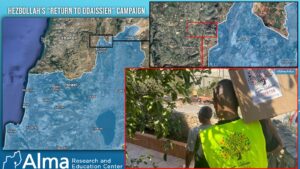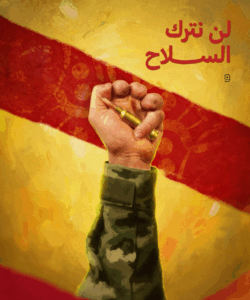Photo Source: shutterstock
By: Dr. Zoe Levornik.
On July 8, 2025, the United States officially removed the organization Hayat Tahrir al-Sham and its former leader—now serving as Syria’s interim president, Ahmad al-Sharaa—from the U.S. list of Foreign Terrorist Organizations (FTO). The organization was added to the list in 2013. This is the first time since the September 11 attacks that a jihadist organization was taken off the list without being fully defunct. Rather the opposite, in the case of Hayat Tahrir al-Sham, former members of the organization are now integrated into Syria’s government and security forces.
The decision was made as part of U.S. policy toward Syria, which includes lifting sanctions and promoting diplomatic relations and normalization with the new Syrian regime. According to the U.S. administration, the removal of the organization from the list was made possible in light of the new regime’s declaration that the organization was dissolved (HTS announced its dissolution on January 29, 2025, during the Syrian Revolution Victory Conference held in Damascus) and the regime’s commitment to fighting terrorism in all its forms.
According to Marco Rubio, the U.S. Secretary of State, removing the organization from the terrorist list is a step toward realizing President Trump’s vision of a stable, united, secure, and independent Syria. The United States wants a clean slate for the new regime, in the hope of drawing Syria into the Western sphere of influence and distancing it from Russia and Iran.
Next the United States will request that the member states of the UN Security Council remove Hayat Tahrir al-Sham from the UN’s list of terrorist organizations. According to Syria’s Ministry of Foreign Affairs, al-Sharaa intends to participate in the UN General Assembly in September 2025, and therefore there is a need to lift the sanctions in the Security Council.
Alongside the lifting of sanctions on Syria, the removal of Hayat Tahrir al-Sham from the list of terrorist organizations means that the United States and American entities can maintain relations with the new regime freely and without restrictions. In addition, the removal of the organization from the terrorist list will allow Syrian citizens to associate with the new regime and Syrian refugees to return to Syria without fearing the consequences of cooperating with the new regime. European countries are determined to begin the process of returning refugees to Syria and are therefore pushing for the removal of all sanctions, assuming that this step will promote stability in Syria.
Similar to the decision to lift sanctions on Syria, the removal of the organization from the list of terrorist organizations was also not conditioned on any formal commitment or steps by the Syrian regime. As of now, the Syrian regime has still not met the requirements presented to it during the meeting between al-Sharaa and Trump in March 2025, including the expulsion of foreign fighters and Palestinian terrorist operatives from Syria. Many of the foreign fighters were not expelled but instead were integrated into the security forces (with U.S. support despite the original demand). Regarding the Palestinians, although the status of the Palestinian population in Syria was changed from “refugee” to “foreigner,” beyond that, the regime has so far not acted decisively to expel the Palestinian terrorist operatives from Syria.
In addition, regarding the protection of minorities and the provision of equality to all Syrian citizens, the Syrian regime says all the right things but does not do what is required of it. The recent escalation with the Druze community in Suwayda (which began on July 10) again points to the regime’s inability or unwillingness to impose order and protect all Syrian citizens. The violence, which claimed the lives of many civilians, also indicates the regime’s difficulty in controlling its own security personnel, some of whom took part in the clashes and do not necessarily obey the regime’s orders (many of them are former members of Hayat Tahrir al-Sham).
Beyond the violence against the Druze, there are ongoing reports of persecution and attacks against Alawite civilians, including the abduction of young women. The Christian minority is also suffering from attacks, including a severe terrorist attack carried out by a suicide bomber at the Mar Elias Church in Damascus this past June. ISIS claimed responsibility.
While the United States calls for a normalization agreement between Israel and Syria, it is difficult to see how the Syrian regime can promote such an agreement as long as it fails to unify the factions within the country and fully consolidate its rule. Even a limited agreement focused solely on security arrangements requires stability in Syria and a regime capable of enforcing the agreement and preventing internal conflicts that could also harm Israel’s security.
Syria is the stability of instability.
Alongside the international desire to stabilize Syria by lifting sanctions, concrete steps must be demanded from the Syrian regime in the areas of law enforcement, maintaining order, and protecting citizens and minorities. Moreover, caution must be taken against rewriting the past. While the international community is eager to promote the moderate image of al-Sharaa and the “new Syria,” the extreme Islamic ideology at the core of Hayat Tahrir al-Sham—and to which many fighters in Syria, including those who joined the new regime’s forces, are still committed—cannot be ignored.
The change the West hopes for in Syria will come only if, alongside assistance and support, clear conditions are also placed on the regime’s actual conduct and its commitment to a policy of stability and regional security. These steps should include equal legislation, effective enforcement, cooperation with international monitoring in the areas of human rights, the economy, political institutions, and more. Representative legislation and governance mechanisms could counterbalance extremist forces and foster political norms that would allow for long-term stability.






